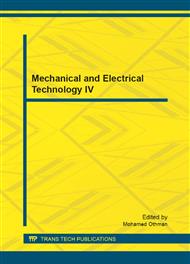p.2643
p.2648
p.2653
p.2658
p.2663
p.2667
p.2671
p.2680
p.2684
A Similarity Measure between Fuzzy Sets
Abstract:
The similarity measure is one of the most useful fuzzy measures in fuzzy logic theory. In this paper, we propose a new similarity measure between fuzzy sets. As a preparation, we first choose an axiomatic definition for the similarity measure. Then, according to the chosen axiomatic definition, we propose a new computation formula. Finally, we give two examples to validate its performance. The results show that the new similarity measure is rational for fuzzy sets.
Info:
Periodical:
Pages:
2663-2666
Citation:
Online since:
November 2012
Authors:
Keywords:
Price:
Сopyright:
© 2012 Trans Tech Publications Ltd. All Rights Reserved
Share:
Citation:


